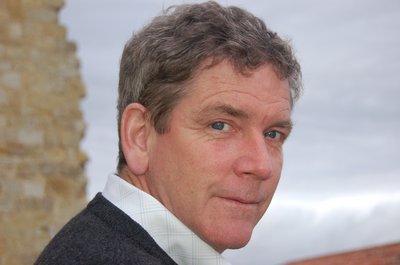For many children – too many, in fact – doing math is like eating vegetables, important and necessary, but lacking the tasty fun of social studies and chocolate cake. But just as our deep love in this country for chocolate cake has led to what some say is an obesity epidemic, our collective aversion to math has had similar bad consequences. Of the 35 industrialized nations, the United States ranks 25th in math scores, according to the International Student Assessment Programme.
Fearing that the U.S. is falling dangerously behind other countries in math and the hard sciences, educators have for years been looking for innovative ways to engage students in these subjects so the nation is able to produce more medical researchers, chemical engineers, physicists, and the like.
Children’s author and mathematician Sean Connolly is doing his part to make math more fun with his latest release, “The Book of Perfectly Perilous Math” (Workman Publishing). Clearly written for the “Hunger Games” generation, Connolly’s book promises to offer “24 death-defying challenges for young mathematicians” by offering math-oriented word problems/survival scenarios that must be solved in order for the players to live.
Connolly’s “Rope Bridge Challenge,” for instance, begins this way: “Arnie, Bella Carlos, and you are trapped in the Andes Mountains, being chased through Incan ruins by zombies. Your vacation could not have gone any worse. The zombies are making their way up the mountain now – they’re about 20 minutes away – and they obviously have a ‘take no prisoners’ policy. You need to get away – and fast. But how?”
Connolly said his daughter and son, who are twins, were the inspiration for the book and were his partners in survival throughout its creation.
“I’d written about 65 childrens’ books before in subjects ranging from anabolic steroids to Amelia Earhart. But when the twins were of an age to get into science – and before either of them got scared off – I decided to consider them ‘collaborators,’” Connolly said last week from Great Britain. “So we found loads of activities, or experiments, that we could do using easy-to-find ingredients such as eggs, balloons, potatoes, tennis balls. And before you know it, a book developed.”
The end result, “The Book of Perfectly Perilous Math,” includes word problems that challenge the readers’ analytical thinking skills, ratios and proportions, students’ ability to make use of structure, ability to use numbers and fractions, and other skills. The book follows Connolly’s previous release, “The Book of Totally Irresponsible Science.”
The author will return stateside this week for an appearance at Jersey City’s Liberty Science Center on Sunday, April 22 from noon until 2 p.m. for a “challenge demonstration” and Q&A with audience members.
Connolly acknowledges that math and science suffer somewhat from an image problem.
__________
Despite his obvious love for the subject matter, Connolly acknowledges that math and science suffer somewhat from an image problem, in much the same way lima beans and beets do, especially when compared to chocolate cake.
“Very often it boils down to early experiences, a sense of being left behind by others who find it easier or simply ‘get it,’” he stated. “Right off the bat there’s an ‘us and them’ aspect to the math experience. And then, to make matters worse, kids often find themselves in the company of grown-ups who seem almost to pride themselves in not being good at math…It’s [about] perception, and a little social pressure not to look like a nerd or geek just because you find it amusing, rewarding, or even fun to work out problems. Because there’s no room for error – that, of course, is part of math’s beauty – you can’t ‘fudge it.’ So maybe people feel there’s more pressure on them when they’re doing math.”
He hopes the book, which has a workbook format replete with fun and engaging illustrations by Allan Sanders, will instill in children, and parents a sense of wonderment and exploration that may have been dampened in early classroom experiences. Interestingly, he seems not to favor the current “push” to get U.S. kids interested in math and science.
“I aim to engage children [and parents],” Connolly said. “I grew up in the Cold War, and a lot of bright people were steered into engineering and science because we needed to be ahead of the Russians. It would be great if kids would set off in that direction through a sense of their own willingness.”
Interestingly, the feedback he has received thus far for “The Book of Perfectly Perilous Math” has been that it has spurred a greater interest in girls to learn math, and has ignited a greater interest in reading among boys.
Ultimately, however, he said he hopes the book opens a door to further learning that may have been closed for many years.
“I hope that readers, young and old, will go away with a better idea of their own potential,” Connolly stated. “As I said, this is all about finding out what the real problem is….and then attacking it. And very often, it’s not so hard to do that if you approach it systematically. This book helps people learn to use that focus while being entertained at the same time.”
E-mail E. Assata Wright at awright@hudsonreporter.com.
